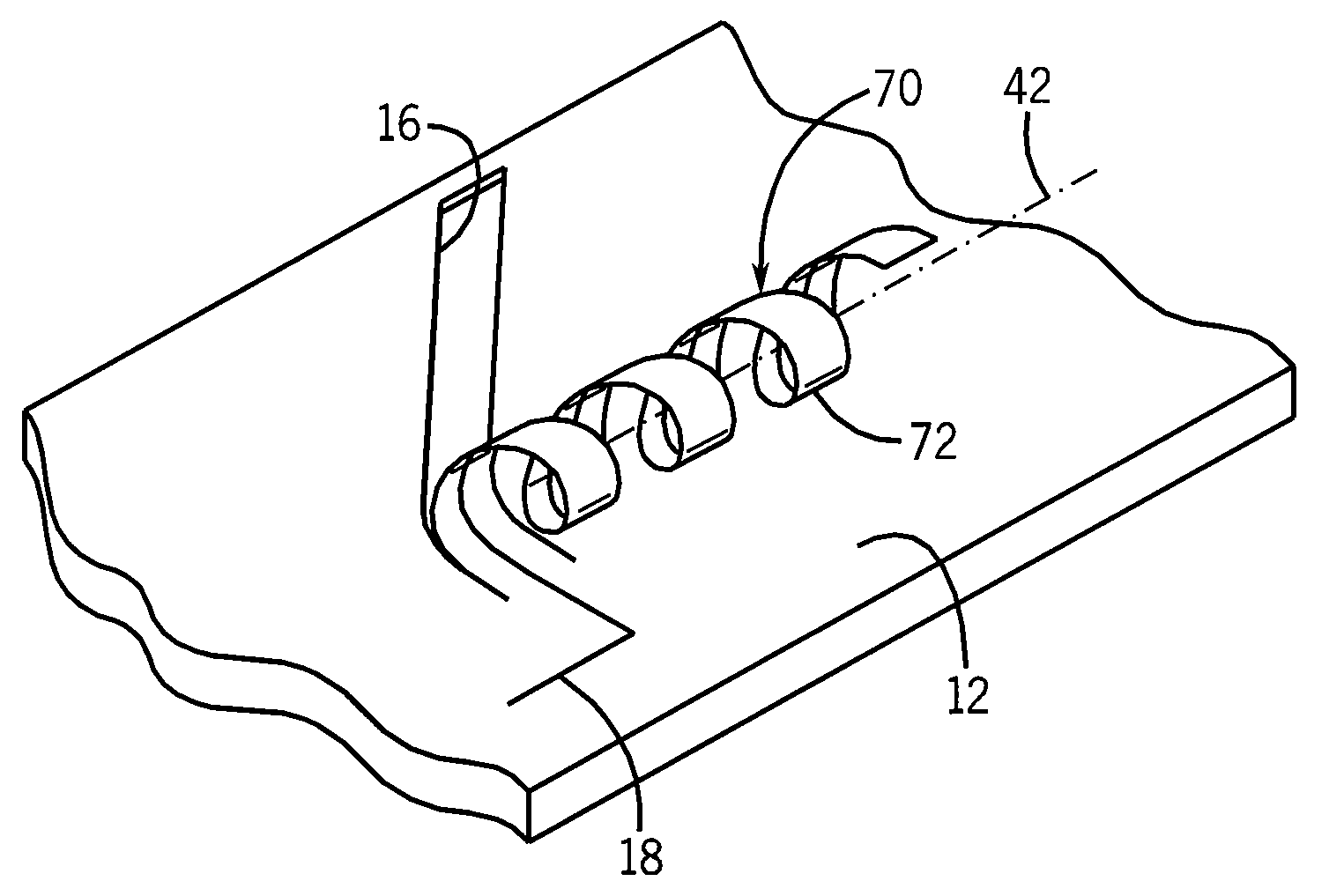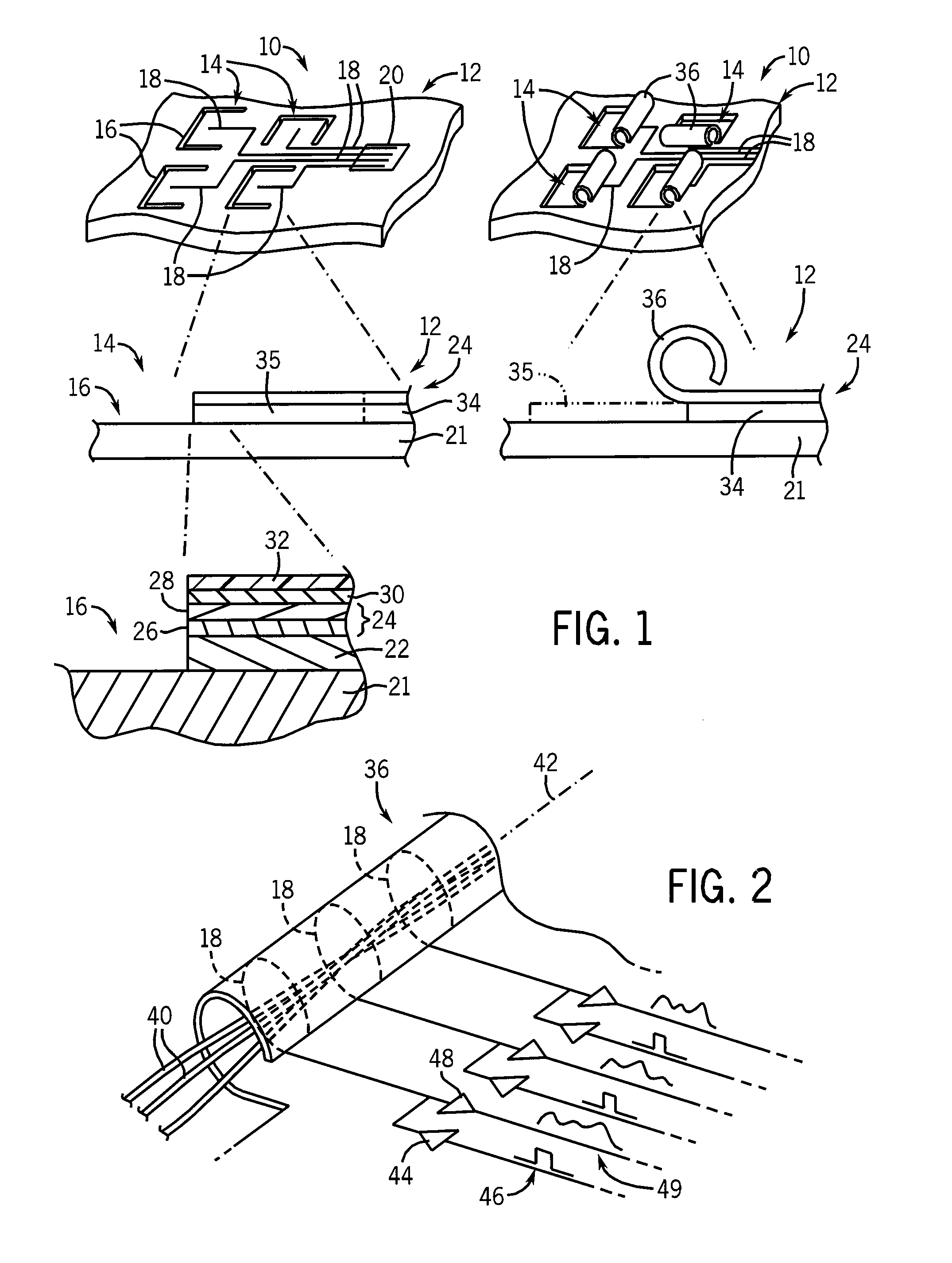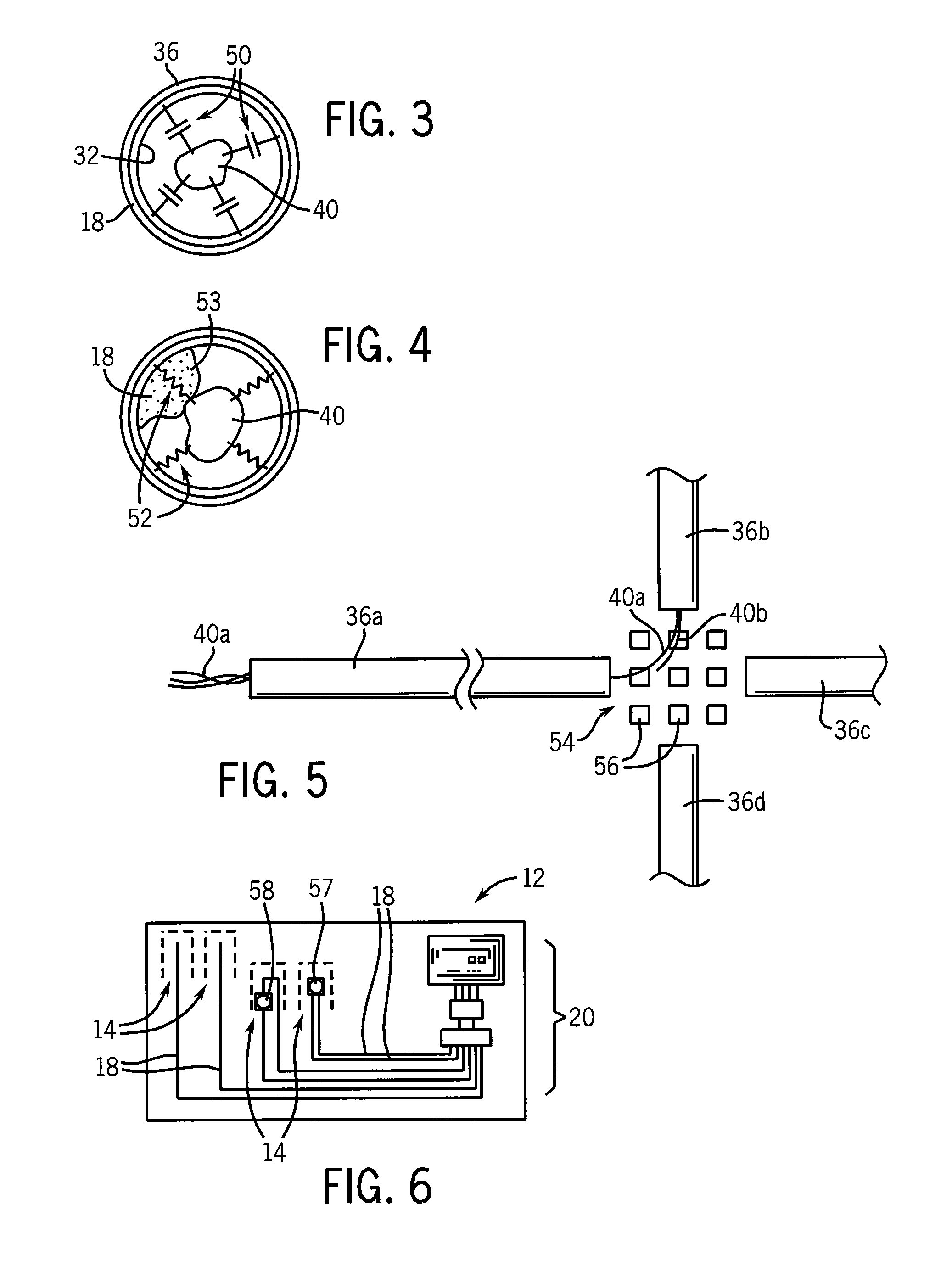Tubular scaffold for neural growth
a neural growth and scaffolding technology, applied in the field of scaffolding systems for neurons, can solve the problems of difficult placement of electrode systems and impracticality
- Summary
- Abstract
- Description
- Claims
- Application Information
AI Technical Summary
Benefits of technology
Problems solved by technology
Method used
Image
Examples
Embodiment Construction
[0041]Referring now to FIG. 1, a neural scaffold 10 may provide for a support surface 12 having multiple pre-forms 14 etched therein providing, for example, C-shaped channels 16 describing three contiguous sides of a rectangle and having two opposed sides several millimeters in separation. Conductors 18 may be deposited or otherwise formed on an upper face of the support surface 12 within the boundaries of the channels 16 and extending outside of the channels (through the open side of the rectangle) to the support surface 12 outside of the pre-forms 14. Within the pre-forms 14, the conductors 18 may extend generally parallel to the opposed sides of the channels 16 by an amount substantially equal to the length of those opposed sides.
[0042]The conductors 18 may provide for electrical or optical conduction from the upper face of the support surface 12 between the pre-forms 14 to electrical circuitry 20 also formed on the support surface 12 using conventional integrated circuit techniq...
PUM
| Property | Measurement | Unit |
|---|---|---|
| diameters | aaaaa | aaaaa |
| length | aaaaa | aaaaa |
| aspect ratio length | aaaaa | aaaaa |
Abstract
Description
Claims
Application Information
 Login to View More
Login to View More - R&D
- Intellectual Property
- Life Sciences
- Materials
- Tech Scout
- Unparalleled Data Quality
- Higher Quality Content
- 60% Fewer Hallucinations
Browse by: Latest US Patents, China's latest patents, Technical Efficacy Thesaurus, Application Domain, Technology Topic, Popular Technical Reports.
© 2025 PatSnap. All rights reserved.Legal|Privacy policy|Modern Slavery Act Transparency Statement|Sitemap|About US| Contact US: help@patsnap.com



